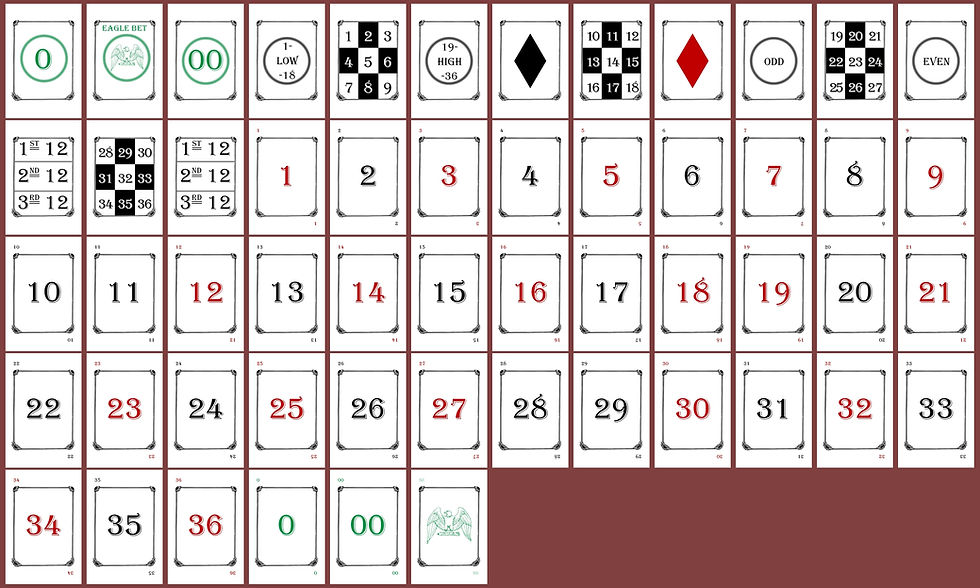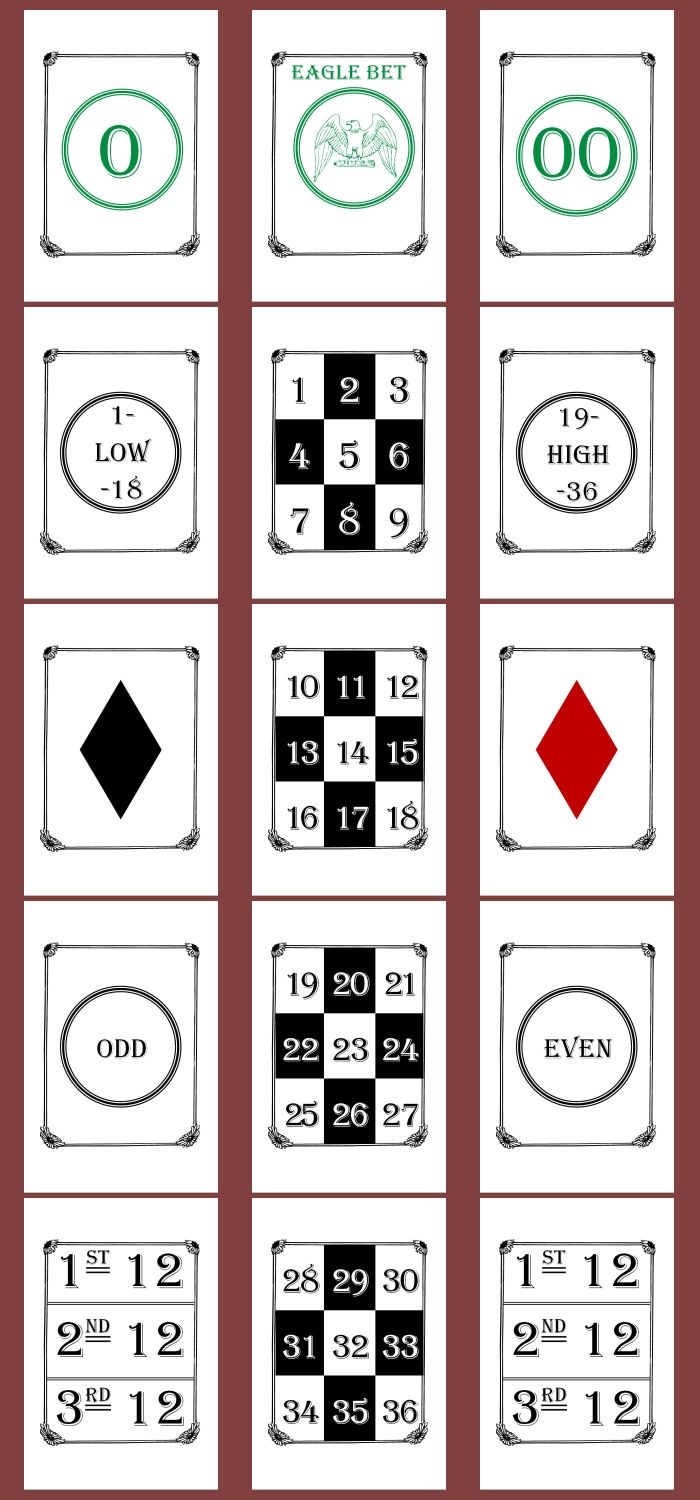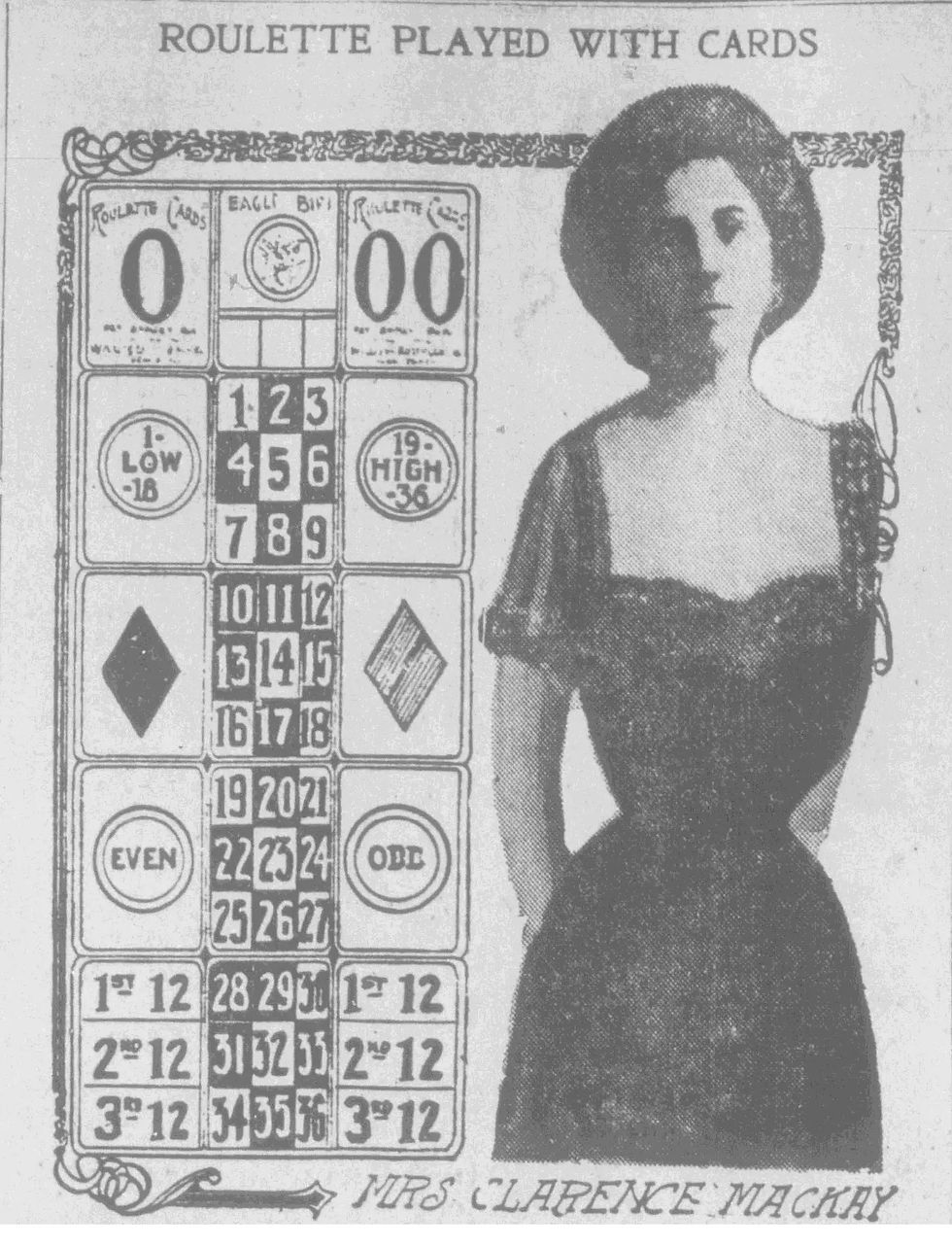Roslyn: Roulette with cards
- Newt

- Apr 16
- 4 min read
On the 22nd of November, 1928, the New York Leader reported on a new card game called "Card Roulette" that had been introduced by Clarence H. Mackay at his hunting lodge in Arkansas, and later popularized by Mrs. Mackay at their grand estate "Harbor Hill" in Roslyn, New York.

This ingenious adaptation eliminated the need for a roulette wheel, transforming a gambling hall staple into an elegant parlor game suitable for high society gatherings. The article described how the Mackays and their guests would play with "beautiful mother-of-pearl chips" rather than for substantial money, as "tremendous losses in bridge and wheel roulette are not smiled upon too tolerantly by the pretty chatelaine of Harbor Hill."
The game consists of 54 cards in total: 15 colored and numbered "layout" cards that form the betting surface,

and 39 "wheel" cards that are shuffled and drawn to determine the winning outcome.

What makes this game particularly noteworthy for gambling historians is the preservation of the American Eagle space—a feature found on some early American roulette wheels but long since vanished from modern casinos.
The Mackay Legacy
It seems fitting that the Mackays would introduce a new game that bridged two worlds. Clarence's father, John William Mackay, won the famous "Bonanza" mine in a card game, becoming one of the wealthiest gold miners in America. Meanwhile, Mrs. Mackay's ancestors were "a family of consequence" who played cards "at spindle-legged tables lighted by candles." The game perfectly symbolizes the merging of frontier gambling traditions with refined European pastimes.
The Harbor Hill estate where this game flourished was one of the grandest mansions of America's Gilded Age—designed by Stanford White, built between 1899 and 1902, featuring 160 rooms on 648 acres of Long Island splendor. Here, business magnates, politicians, and international nobility would gather to socialize and play games that reflected their status and tastes.
The Eagle Bet
What makes this game particularly interesting is the inclusion of the Eagle space alongside the traditional 0 and 00. This nationalistic symbol was a feature on some American roulette wheels in the 19th and early 20th centuries but eventually disappeared. The article notes that betting on the Eagle paid out 35:1, just like betting on a single number.
The presence of this Eagle bet connects us to a specific moment in American gambling history—a time when roulette was being adapted and transformed in its journey from European salons to Western frontier towns and back to East Coast mansions.
Reviving Roslyn
I've recreated this forgotten game with historically accurate cards, giving it the name "Roslyn" after the location of Harbor Hill where it flourished. The deck features green-backed layout cards that mimic traditional casino felt, while the "wheel" cards display roulette wheel backs to honor the game's origins.
This recreation allows modern players to experience a unique moment in American cultural history—a time when the nouveau riche of the Gilded Age were creating their own entertainments that reflected both their frontier origins and their aristocratic aspirations.
You can purchase a print-on-demand deck of Roslyn cards here. Each game comes with a rulebook explaining the gameplay, historical context, and the fascinating story of the Mackays and Harbor Hill.
By playing Roslyn today, you're not just enjoying a card game—you're holding a piece of American cultural history in your hands, connecting to an era when the boundaries between old and new money, between the Western frontier and Eastern high society, were being negotiated around gaming tables in gilded mansions.
Rules
Layout
The 15 layout cards are arranged in a 3×5 grid:
0 | EAGLE BET | 00Low (1-18) | 1-9 | High (19-36)Black | 10-18 | RedOdd | 19-27 | Even1st 12, 2nd 12, 3rd 12 | 28-36 | 1st 12, 2nd 12, 3rd 12Game Setup
Arrange the 15 layout cards on the table as shown above
Shuffle the 39 "wheel" cards thoroughly
Players place their betting chips on the layout cards to indicate their bets
A dealer is selected (often the host/hostess)
How to Play
Players place their bets by positioning chips on the layout cards
The dealer shuffles and cuts the "wheel" cards
The dealer turns up one card from the "wheel" deck
The drawn card indicates the winning bet for that round
Points are awarded based on the type of bet:
Colors (red or black): 1 point
Cards 1-18 or 19-36: 1 point
Single numbers: 35 points
"0", "00", or "Eagle": 35 points
When "compensation cards" are turned, players forfeit points according to their markers
Betting Options
Single Numbers: Bet on any number from 1-36
0, 00, or Eagle: Bet on any of these special spaces
Red/Black: Bet on the color
Odd/Even: Bet on whether the number will be odd or even
Low/High: Bet on numbers 1-18 (Low) or 19-36 (High)
Dozens: Bet on 1st dozen (1-12), 2nd dozen (13-24), or 3rd dozen (25-36)
The original cards and the gracious hostess





Comments